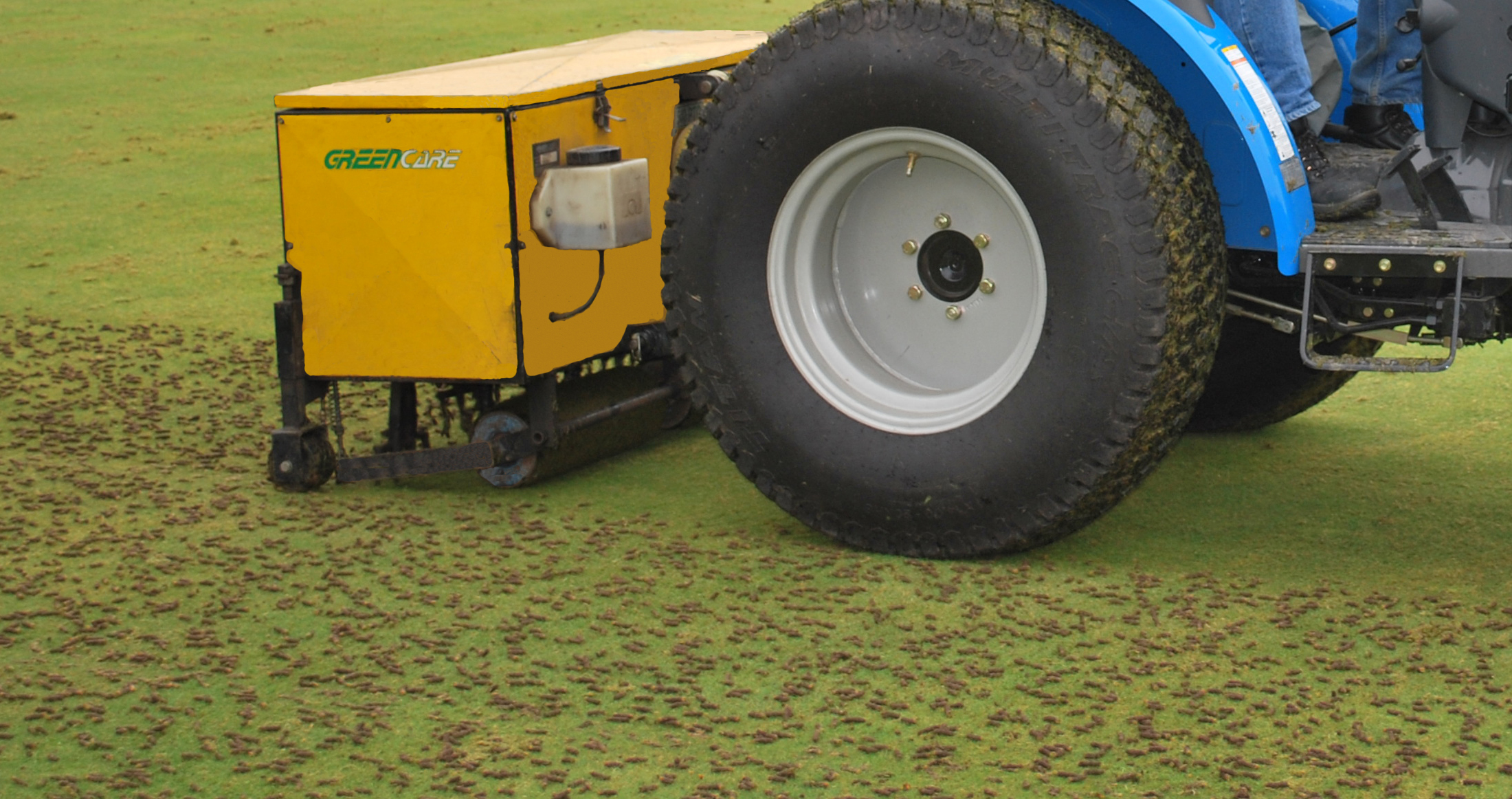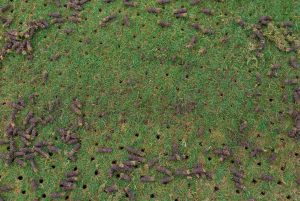Fine Turf – Coring
De-compaction by tining
McNab Sport’s Coremaster machine has a formation of rows of tines which penetrate the soil surface.
We usually carry out tining in low season (i.e. spring or autumn) when weather is warm enough to generate root growth and for the holes to ‘heal’.
Benefits
- Compaction relief and improved surface performance
- Better penetration of water and air
- Fertiliser/nutrients delivered into the root zone
- Improves soil structure
- Improves rooting capacity
- Longer use of the surface – increased playability all year round
- Releases toxic gases from the soil
- Increases shoot growth
We offer:
Solid Tining
- 1/2" (13mm) solid Quadra tines or 1/2" (13mm) pencil tines
Hollow Tining
- 1/2" (13mm) jumbo or Quadra hollow tines

Solid Tining
Solid tine aeration involves driving solid metal tines into the surface of the grass, puncturing long holes into it.
This form of aeration does not actually remove any soil as cores, so this method causes the holes to close in after a few days, unless top dressing sand has been brushed into the holes. However, it is still a very beneficial way to decompact a turfed surface.

Hollow tining
A hollow tine is a round metal tube that penetrates into the ground, collects a core and when the tube penetrates the ground again, the core is pushed out through a hole.
These cores are removed containing materials such as poor quality soil and thatch and allows water and air into the root area.

Cores lie on the turf and need to be brushed off and disposed of from the surface.
Solid and hollow coring cause disruption, greens can take a few weeks to recover.
Contact us for more information on coring
01577 864 198



